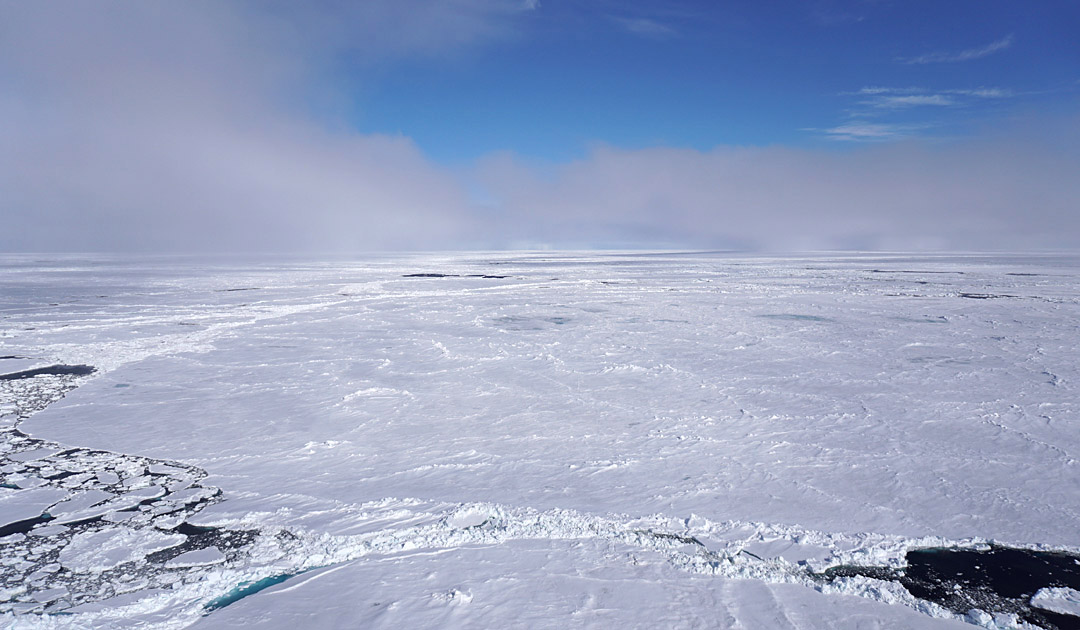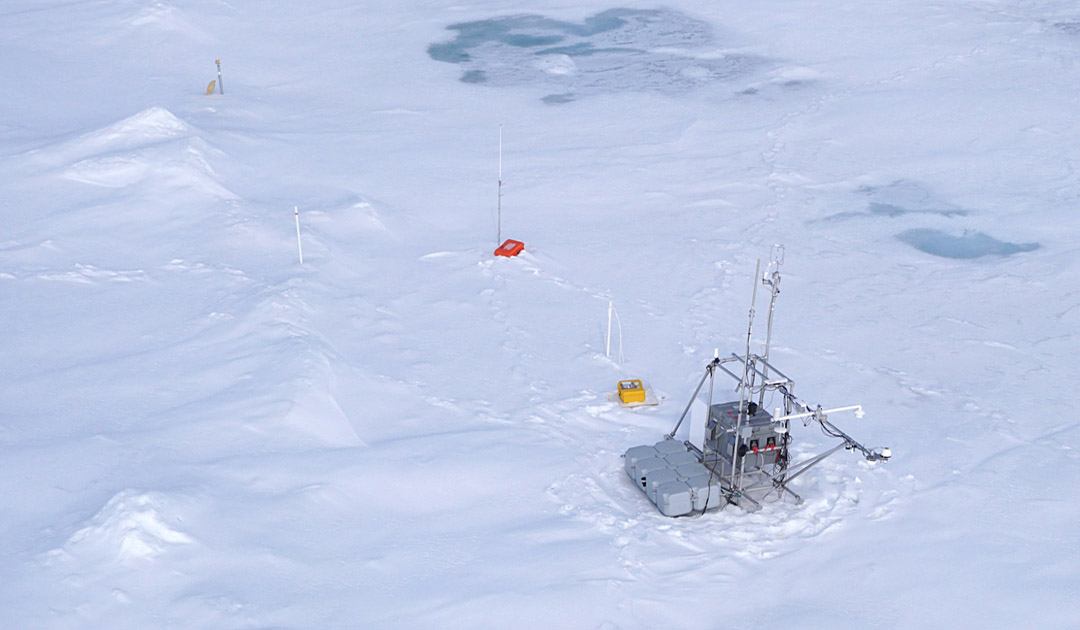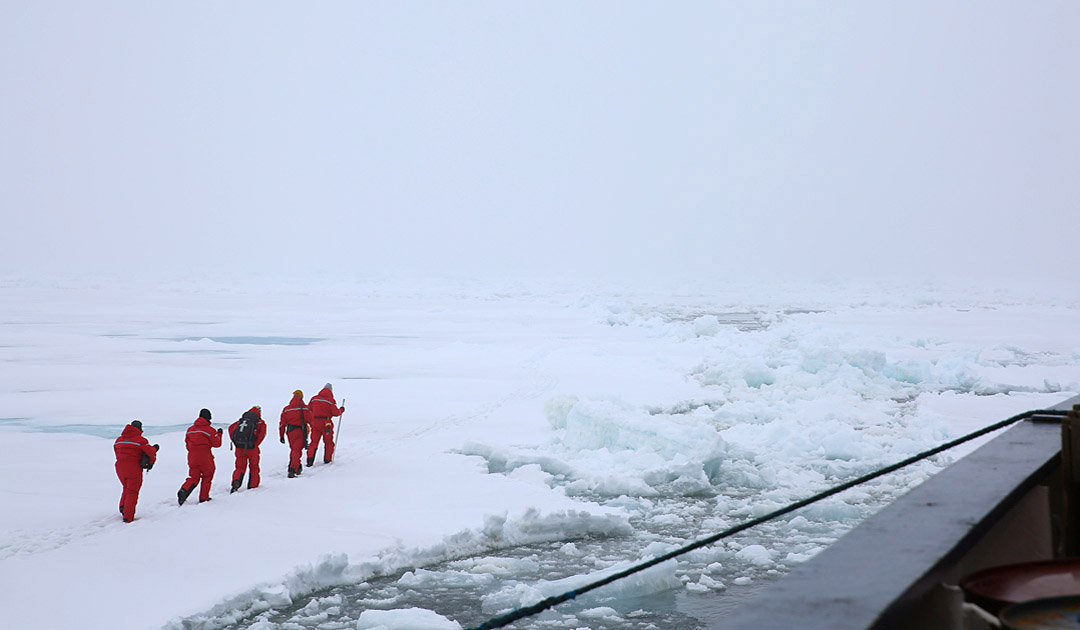
After a month of ‘absence’, the research icebreaker ‘Polarstern’ reached the MOSAiC ice floe again on 17 June at 82.2 °North, 8.4 °East. Due to the Convid-19 virus, the crew change could not be carried out on the ice floe as planned. This took place on 17 May 2020 off Spitsbergen.

When leaving the MOSAiC ice floe, the autonomous measuring devices were left behind. From there, they regularly sent GPS data of the position of the plaice and throughout many important data even while the “polar stars” were on the move. This measured how the energy balances, i.e. the energy flows between the atmosphere, ice and ocean and much more, behave.
Thus, valuable time series of basic parameters could be continued even during the absence of scientists. Of course, this cannot replace research on the ground, so the team in the fourth section is now happy to be able to start work.

First impressions of the plaice on their return: “The original solid area of the plaice, our so-called fortress, survived the deformations in the spring largely intact and is still a good basis for our research camp,” reports Prof. Markus Rex, head of the MOSAiC expedition and atmospheric physicist at the AWI. “We will be able to work here until the summer. With the big summer melting that is now on the way, however, we will have to be very mobile with our superstructures and have to adapt to the developing conditions. We may also relocate the research camp later in the summer – it all depends on the development of ice conditions,” says Rex, who had already led the first expedition from September 2019. He was able to benefit from the experience of the plaice search at that time: As in the past autumn, the “Polarstern” initially set off a little away from the measuring area in order to explore the plaice with teams on the ice in more detail. Only in a few days will the ship be maneuvered to the final position.

The mooring is one of the many moments in which the captain’s experience and navigation skills are required. Thomas Wunderlich took over the command of Stefan Schwarze in the current exchange. Both, unlike the other crew members, had chosen to take over only once during the entire expedition. “It is important, as in the days of the old explorers, not to drive in anywhere pointless, but to find the right entry position into the ice,” thomas Wunderlich reports from the approach to the plaice. “We were able to travel well and quickly for the first few days. Wind direction and visibility have helped us in this.” From 82 ° North, however, the situation had “tense”. The dynamics of the ice increased, it became more powerful. “On the weekend of 13/14 June, we were forced to stop due to ice pressing and had to shut down the machines in order to conserve valuable fuel resources. But such a standstill also has the advantage that you can see: nothing is taken for granted and predictable – that you just have to submit to the circumstances,” explains the captain. His greatest wish is “that we can stay at the plaice for as long as possible, and thus accompany the birth and its life cycle to the end. Even if this will be an enormous challenge for logistics and navigation.”

“In the summer that is now beginning, we will be able to explore the processes in the Arctic climate during the melting season in unprecedented detail,” emphasizes Markus Rex. These include vortices in the ocean, which are created by ocean currents under the ice, how the thickness and texture of the ice influence the climate processes, the role of the snow cover on the sea ice and how the interaction with atmosphere and clouds works. At the moment, the summer ice melt begins and pools are created on the sea ice, which change the radiation balance. Where the ice eventually breaks, water vapor and aerosols escape through cracks and cracks, causing clouds to form in the atmosphere. How these clouds are designed and whether they cool or warm the lower air layers are further of the many questions that the research teams will pursue until the polar stars return to their home port of Bremerhaven, where the icebreaker is expected on 12 October 2020.
Heiner Kubny, PolarJournal





